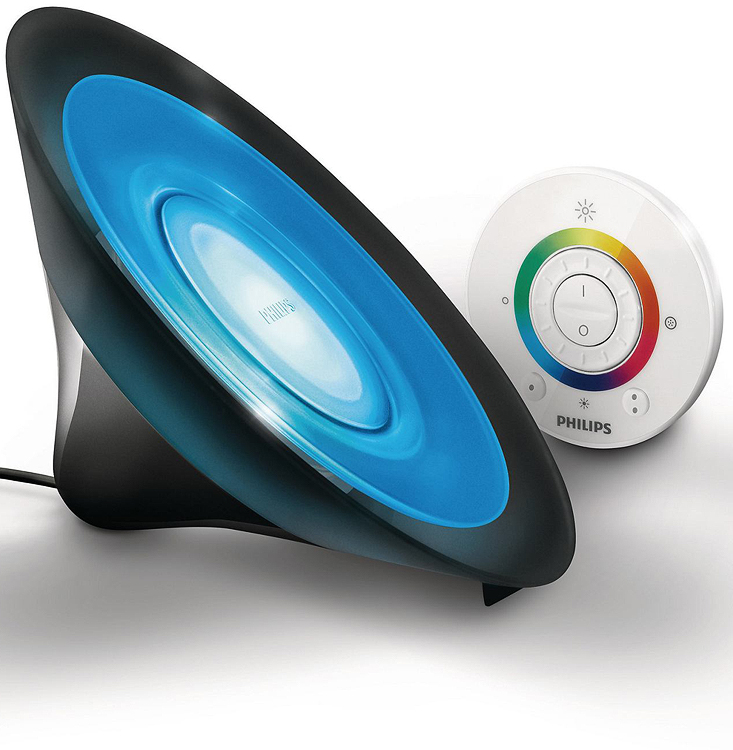

#Philips hue go aura tv#
It was particularly adept at identifying just the right colors to send to my lone Hue bulb even as the on-screen image presented a muddle of colors as you’d get with any TV show, game or film. There was a slight lag between the color changes on the screen and the Hue bulb, but it didn’t detract from the experience, with the Hue smoothly changing colors even during fast-moving action scenes.

#Philips hue go aura full#
With a YouTube video playing at full screen and the Hue Sync app maxed-out at “Intense” brightness and “CPU - high performance,” the HueSync process usually reported CPU usage on my old iMac at around 24 to 26 percent, occasionally spiking to over 40 percent, or dropping into the low teens. My entertainment area is comprised of a single bulb behind my all-in-one, but you can go nuts with light strips and other Hue fixtures to create as big and bright of a light show as you want. The app requires a Hue bridge on your network, and you need to define an “Entertainment area” in the much improved Hue 3.0 app that went live a few days ago. The Hue Sync app set to synchronize video. Hue Sync creates an approximation of that glorious effect, but with a non-trivial impact on CPU. I’ve always been a fan of Microsoft’s IllumiRoom concept, and those Philips Ambilight TVs that bleed colors right off the display and onto the wall behind it. I’ve got a four-year old 27-inch iMac that sits about a foot from a white wall, with an old “Pixar lamp” behind it fitted with a multi-colored Hue bulb. Maybe it’s also the biggest screen in your house, surrounded by a rumbling speaker configuration that’s perfectly tuned to blast your face with audio while gaming, or watching videos and film. Let me guess: like me, you spend a lot of time behind your home computer. I know because I’ve been testing a pre-release version of the app on an iMac for the past few days. It works with anything, really, even music and web browsing, but the experience is especially immersive when gaming or watching video at full screen.

Hue Sync detects whatever colors it sees on the screen and then projects a matching aura onto the walls around it. Today, Philips is making its Hue Sync app available to anyone looking to synchronize their Hue lights with whatever’s running on their Windows or Mac computer.


 0 kommentar(er)
0 kommentar(er)
